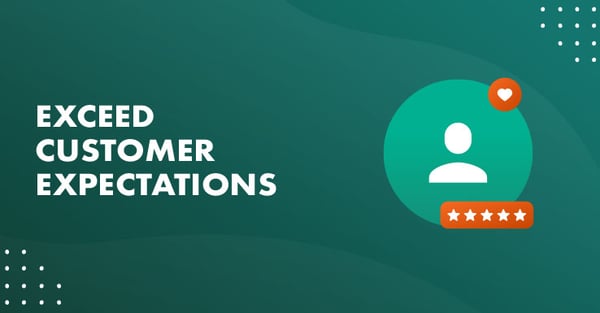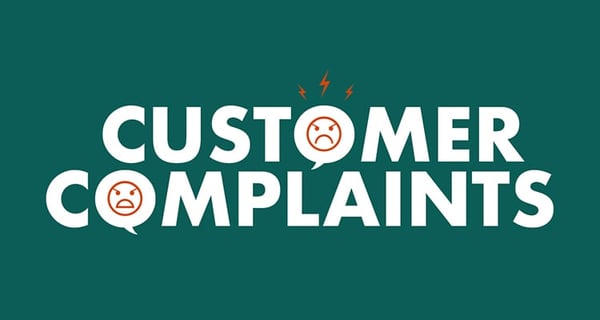You've built a skilled customer support team that embodies your brand's values and consistently delivers high-quality customer service.
Satisfaction scores are climbing, positive reviews are pouring in, and new customers are signing up.
That’s great news! 🤩
However, a persistent problem lurks beneath the surface – customer churn. 😟
Despite your team's best efforts, customers, even seemingly satisfied ones, are leaving at the end of their contracts.
You ask yourself, "What're we doing wrong? How can we make our customers stay?"
The answer may lie not in what you're doing, but in how your customers are thinking.
These are called cognitive biases, which affect the decisions and judgments people make, and can significantly influence customer loyalty and retention.
Understanding and leveraging these biases can provide a fresh perspective on customer retention.

Source: Katelyn Bourgoin
Ready to delve into the minds of your customers?
Let's dive in!
What is cognitive bias and why does it matter?
Renowned psychologists Amos Tversky and Daniel Kahneman first introduced the concept in the 1970s.
Their pioneering work challenged the then prevailing idea of human beings as rational decision-makers.
They showed through numerous experiments that humans often take mental shortcuts – known as heuristics – that can lead to biased outcomes. The pair found that these biases are not just occasional lapses in judgment, but rather fundamental to the way we think.
It has to do with how we remember things and how much available attention we have.
You might think that the human brain is capable of processing an infinite amount of information, but that wouldn’t be true. While our senses are able to process 11 million bits per second, our minds are only capable of processing 50 bits per second!

Our minds often use cognitive biases to make decision-making faster and easier, often without us even realizing it.
How cognitive bias impacts behavior and decision-making?
There are 180+ cognitive biases and more added every day.

Cognitive biases operate mostly in the subconscious realm, leading us to make decisions based on perceived patterns and past experiences.
Here’s an example:
Let’s say you’ve been getting a string of complaints from several customers.
These complaints take up your entire day, and by the end, you're left feeling as though there's a major issue with your product or service.
You're ready to rally your team to address what seems to be an epidemic of customer dissatisfaction.
But, wait.
Are you sure it’s an epidemic? 🤔
What if these complaints only represent a tiny fraction of your customer base, and most of your customers are actually quite satisfied?
Because these complaints are recent and easily remembered, you might overestimate their frequency and significance, and, as a result, misjudge the overall customer sentiment towards your product or service.
This is your brain falling prey to the "availability bias".
Now, let’s take another example:
You're a CEO selecting a software vendor for your organization.
The stakes are much higher, with potential impacts on costs, efficiencies, and employee satisfaction. Under these circumstances, cognitive biases can come into play in powerful ways.
You might favor a vendor you've used before (status quo bias) or put excessive weight on a recent negative review (negativity bias), even if all other indicators are positive.
3 cognitive biases and their role in customer retention
Understanding cognitive biases, their origin, and their impact on decision-making is crucial when crafting strategies to retain customers in a B2B context.
In this section, we'll focus on three cognitive biases and show you how you can leverage this understanding to your advantage.
1. Endowment Effect: Cultivating a sense of ownership
The endowment effect refers to people's tendency to overvalue things simply because they own them.
This is closely related to the loss aversion bias, where people feel more strongly about losing something then gaining something of equal value.

In the context of customer service, it implies that your customers may place higher value on your service if they feel a sense of ownership towards it.
👉 How this applies to a B2B context:
One practical application of the Endowment Effect in a B2B environment is through personalized customer success programs. This strategy involves the customer in shaping their experience, increasing their perceived value of the service.
At SuperOffice, a customer is assigned a dedicated customer success manager. This manager doesn't just ensure a smooth onboarding, but collaborates with the customer to establish individual goals and develop a custom success plan.
By being part of this process, the customer obtains a sense of ownership over their journey with the product, thereby triggering the Endowment Effect.
This hands-on approach not only boosts customer retention, but also provides you with invaluable insights for future product or service improvements.
2. Status quo bias: Emphasizing stability and consistency
Status quo bias is a cognitive bias that makes people prefer keeping things as they are, or maintaining the current state of affairs, resulting in a resistance to change.

As a customer service leader, you can leverage this bias by emphasizing the consistency and reliability of your service or product. This could mean also reassuring your customers that changes in your product or service won't disrupt their operations or would only enhance their experience.
👉 How this applies to a B2B context:
Your company decides to roll out a major update.
Customers are apprehensive about the changes fearing it might disrupt their workflow. Your communication during this period should leverage the status quo bias by assuring them that the update is intended to enhance their experience and make their work more efficient, not to disrupt it.
To successfully overcome the status quo bias, Include messages that affirm the continued availability of features they rely on.
3. Confirmation bias: Re-affirming customer beliefs
Confirmation bias is our tendency to favor information that confirms our existing beliefs while ignoring contradictory information.
In short, your customers believe what they want to believe.
This means that once your customers believe in the quality of your service, they’re likely to focus on evidence that supports this belief and dismiss any negative experiences as anomalies.
👉 How this applies to a B2B context:
You can leverage this bias by consistently meeting customer expectations and offering high-quality service.
Highlight positive customer testimonials and case studies to reinforce their positive beliefs about your service.
For example, at SuperOffice, customers’ positive experiences are reaffirmed through case studies and testimonials highlighted on the website.
These case studies present successful companies who have improved their productivity using a CRM solution, thus confirming a new customer's belief in SuperOffice’s ability to help them create strong customer relationships.

Using cognitive biases to enhance customer retention
Let’s make one thing clear – understanding cognitive biases is not about manipulating customers!
It’s about enhancing their experience with your company and products. 🙌
And there are several ways to turn these cognitive biases into beneficial tools for both your company and your customers.
Start by acknowledging that biases are a natural part of human decision-making. We all have them, and they impact our perceptions and decisions daily.
Then, strive to understand these biases better.
Invest in training for your team to recognize cognitive biases and adapt their strategies accordingly. Utilize the power of feedback and data analysis to identify patterns that might hint at these biases in your customers' behavior.
Next, integrate this understanding into your customer service practices.
From the way you communicate with customers to how you design their journey with your service, let the knowledge of these biases guide your strategies.
Lastly, always be transparent with your customers.
They will appreciate it if you address these biases directly and honestly. This not only fosters trust, but also opens up a dialogue that can lead to a deeper understanding of your customers and their needs.
Conclusion
As we navigate the ever-changing waters of the business world, understanding the human elements that drive decision-making can serve as our compass.
Recognizing and effectively leveraging the Endowment Effect, Status Quo Bias, and Confirmation Bias is just the beginning.
By understanding the many different biases, we can exceed our customers' expectations, providing a service that feels personalized, thoughtful, and most importantly, valuable.
In an era of rising customer expectations and intense competition, understanding and leveraging cognitive biases has become more than an option – it's a competitive necessity.
So embrace the human element, integrate these insights into your customer service strategy, and watch your customer relationships flourish.



